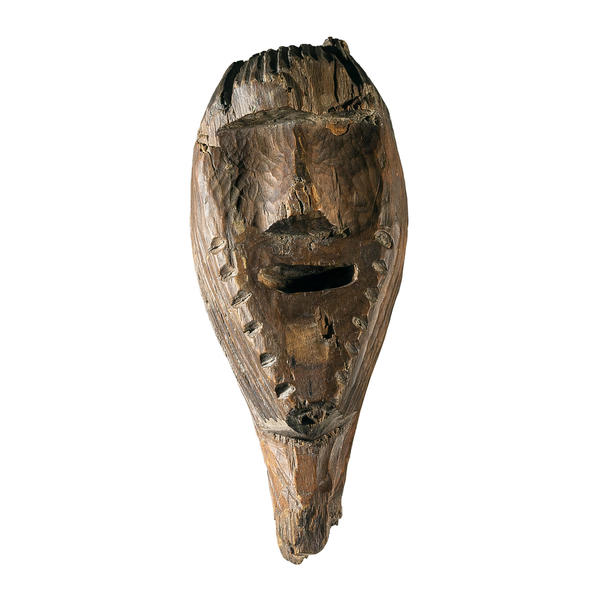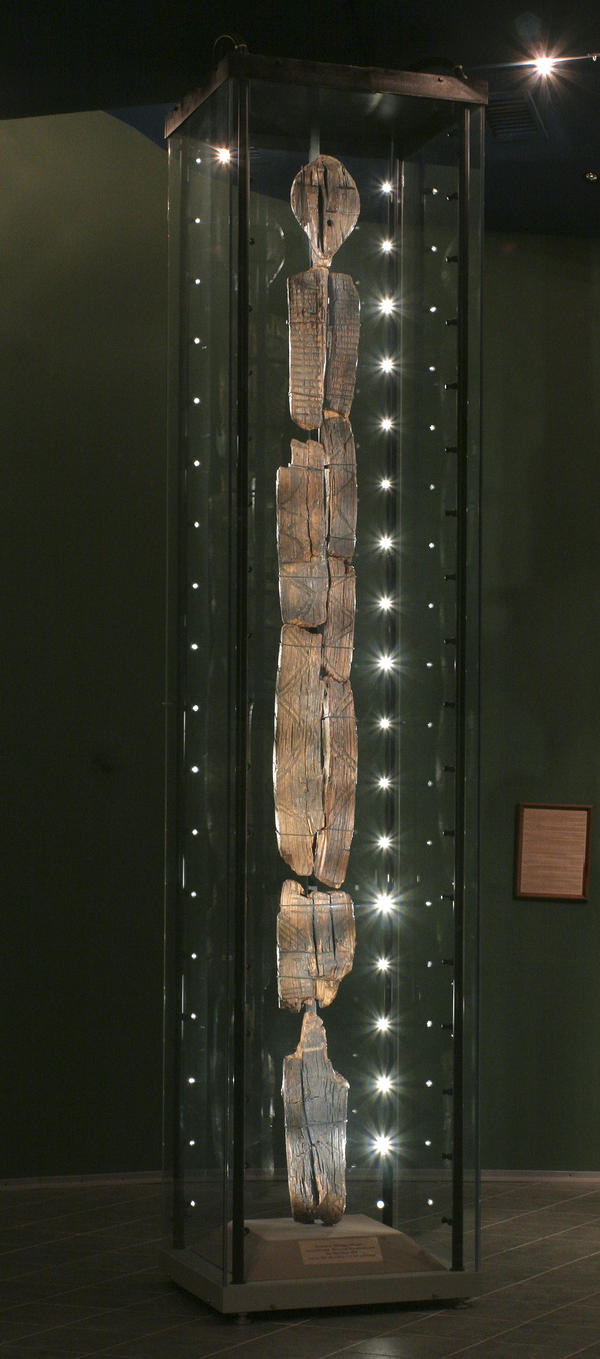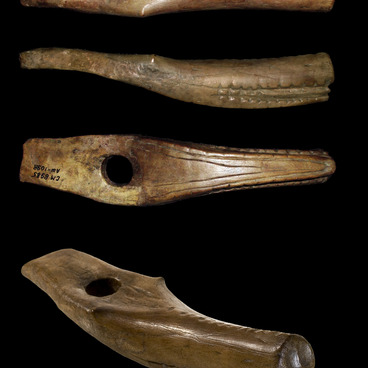Small Shigir Idol was found during removal of peat in the territory of current Sverdlovsk Region in January of 1890.
Idol’s Head (Small Shigir Idol)
Время создания
the Metal Age
Размер
19x11x7 cm
19х11х7 cm
19х11х7 cm
Техника
surfacing, carving, chipping
6
Открыть в приложении#5
Unknown Author
Idol’s Head (Small Shigir Idol)
#6
#7
Back in the middle of the 19th century, the Urals was seized by the gold rush. The miners were looking for gold deep under thick layers of peat, and often found historical artefacts together with the precious metal. After the miners started finding bony and bronze items, archeological excavations commenced in the region.
#8
The woodenhead called Small Shigir Idol was found at Yazevsky mine. It was excavated from the bottom of Lake Shigir. Big Shigir Idol was found there as well; it is the oldest wooden sculpture in the world created about 11 thousand years ago. Small Shigir Idol is much younger, even though the specialists could not define its exact age.
The archeologists studied its surface and the way it was treated, and identified that ancient people produced this idol using metal tools in the early Iron Age (3-2 millennium B.C.). Several godheads were found in the same place, so the scholars concluded there was a pagan shrine there back in ancient times.
#12
Big Shigir Idol, wood. Sverdlovsk Regional Ethnography Museum
#9
The sculpture is about 20 cm high. The idol has quite clear-cut face features: a prominent nose, the mouth shape as a lateral gutter, and elongate chin. An unknown artisan located the eyes and the cheeks at the same level, and made the brow ridges in the shape of a ledge – same as of the images on the surface of Big Shigir Idol.
Narrow lateral notches cover all the head’s surface, except for the face. Two ledges are cut at the head’s pate. Big cuttings go along the cheeks and chin of the idol – six from each side. Specialists believe the artisan used the notches to show hair or fur on the hood, and cuttings to show the beard or the fur fringe on the clothes.
#10
In ancient times people preferred to settle around water bodies. Eleven thousand years ago, there were several big lakes where the Shigir moors now are. So during the peat removal the remains of ancient man sites were found there. The first findings were displayed at the sci-tech exhibition of Siberia and the Urals, which took place in the early 20th century in Yekaterinburg. The excavations at Shigir peatlands lasted for several decades, and archeologists found many artifacts there. In 1951, Pavel Dmitriyev (one of the scholars) first wrote about a separate archeological culture – Shigir. According to his estimates, representatives of this culture left the banks of the local about two thousand years B.C.
#11
Pagan idols reflected the beliefs of the indigenous people of the Urals. They preserved their traditions of shamanism and paganism until Russian discoverers came to these lands. After proliferation of Christianity in Siberia, the Urals social customs joined with Russian and European practices, which manifested itself in woodcarving and iconography of the 17th-19th centuries.
#13
Sverdlovsk Regional Ethnography Museum
читать дальшескрыть
00:00
00:00
1x
Idol’s Head (Small Shigir Idol)
Время создания
the Metal Age
Размер
19x11x7 cm
19х11х7 cm
19х11х7 cm
Техника
surfacing, carving, chipping
6
Открыть в приложении
Поделиться




